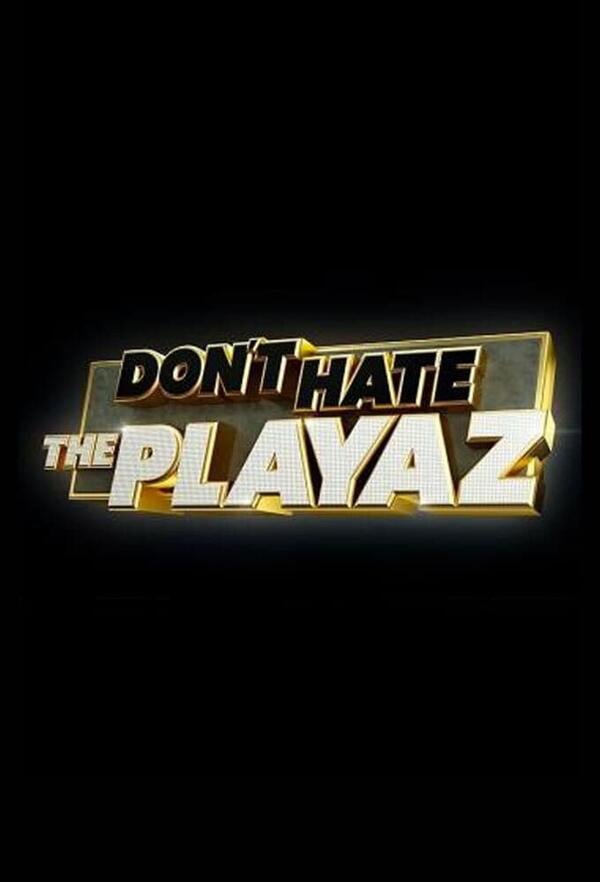Don't Hate The Playaz: Understanding The Hip-Hop Culture

Table of Contents
The Four Pillars of Hip-Hop
Hip-hop culture isn't just music; it's a vibrant tapestry woven from four essential elements. Understanding these pillars – MCing (rapping), DJing, graffiti art, and breakdancing – is crucial to grasping the full scope of this global phenomenon.
MCing (Rapping): The Voice of the Streets
Rapping, or MCing, is the vocal heartbeat of hip-hop. It evolved from the street corner boasting and storytelling of the 1970s, transforming into the diverse styles we hear today.
- Different Rapping Styles: The evolution of rapping showcases incredible diversity. From the conscious rap of artists like KRS-One, addressing social issues, to the gritty realism of gangsta rap and the trap music dominating contemporary charts, the spectrum is vast.
- Key Figures in MCing: Pioneers like Grandmaster Flash, Kool Moe Dee, and Rakim laid the foundation for lyrical dexterity and flow, influencing generations of rappers.
- Lyrical Skill and Flow: The essence of great rapping lies in the intricate interplay of lyrical skill and flow. Mastering rhyme schemes, internal rhyme, and rhythmic delivery is paramount.
DJing: The Architect of the Soundscape
The DJ is more than just a music selector; they are the architect of the hip-hop soundscape. From block parties in the Bronx, where DJs like Kool Herc extended breaks in songs to allow for dancing, to the sophisticated mixing and sampling techniques of today, the DJ's role is fundamental.
- The Significance of Scratching, Sampling, and Beat Mixing: These techniques, pioneered by early DJs, became defining features of hip-hop music, creating unique and innovative sounds. Scratching, in particular, became a highly skilled art form, showcasing rhythmic precision.
- Early DJs like Kool Herc: Kool Herc's innovative use of breaks is widely credited with laying the foundation for hip-hop DJing. His influence reverberates through generations of DJs.
- Evolution of DJ Technology: From simple turntables and mixers to advanced digital systems, the tools of the DJ have evolved alongside the music itself.
Graffiti Art: Visual Expression in Urban Spaces
Graffiti art is the visual manifestation of hip-hop culture, transforming urban landscapes into canvases of expression. It’s a powerful medium for social commentary and self-expression, often reflecting the realities and aspirations of its creators.
- Famous Graffiti Artists: Artists like Jean-Michel Basquiat and Banksy transcended the streets, achieving international recognition for their unique styles and powerful messages.
- The Relationship Between Graffiti and Urban Spaces: Graffiti often interacts directly with its environment, using the city as both canvas and context.
- Styles of Graffiti and Social Commentary: From wildstyle to throwups, various styles convey different messages and aesthetics, often reflecting the socio-political climate.
Breakdancing (B-boying/B-girling): The Art of Movement
Breakdancing, or B-boying/B-girling, is the dynamic physical expression of hip-hop. It's an athletic and creative dance form that embodies energy, precision, and improvisation.
- Different Breakdancing Moves: From power moves like headspins to intricate footwork, the range of breakdancing moves is impressive, demanding physical strength and skill.
- Famous B-boys/B-girls and Crews: Breakdancing competitions and crews fostered a global community, fostering rivalries and collaborations, pushing the boundaries of the art form.
- The Connection to Other Hip-Hop Elements: Breakdancing often features in live hip-hop performances, creating a dynamic interplay between music, dance, and visual spectacle.
Hip-Hop's Socio-Cultural Impact
Hip-hop's influence extends far beyond music; it's a powerful force for social change and global cultural exchange.
Social Commentary and Activism: A Voice for the Voiceless
Hip-hop has consistently served as a platform for social commentary and political activism. Artists use their music to address issues like poverty, racism, and inequality.
- Examples of Artists Addressing Social Issues: Public Enemy, N.W.A, and Kendrick Lamar are just a few examples of artists who have powerfully articulated social injustice through their music.
- The Role of Hip-Hop in Social Movements: Hip-hop has played a vital role in various social movements, providing a voice to marginalized communities and inspiring activism.
- The Power of Hip-Hop's Message: The raw honesty and relatable experiences conveyed through hip-hop music have resonated with audiences globally, sparking conversations and inspiring action.
Global Influence and Subgenres: A Culture Without Borders
Hip-hop's global reach is undeniable, spawning diverse subgenres and vibrant international scenes.
- Examples of International Hip-Hop Scenes: From UK grime to Japanese hip-hop, the global reach of the genre showcases its adaptability and enduring appeal.
- Different Hip-Hop Subgenres: The evolution of hip-hop has resulted in a multitude of subgenres, each with its unique sounds and styles, reflecting cultural and regional nuances.
- The Adaptability and Evolution of Hip-Hop: This constant evolution is a testament to hip-hop's ability to adapt and reinvent itself, reflecting the changing times and evolving cultural landscapes.
Understanding the Misconceptions Surrounding Hip-Hop Culture
It's crucial to address the common stereotypes and negative perceptions surrounding hip-hop culture. Many misconceptions stem from focusing solely on the more aggressive or commercially successful aspects, neglecting the depth, artistry, and social impact of the broader movement. Responsible media consumption and critical thinking are key to understanding the nuances within the music and its diverse expressions. Focusing on specific lyrical content without understanding the artist's intent or the broader socio-political context can lead to misinterpretations. The evolution of hip-hop shows a consistent capacity for introspection and social commentary, countering the reductive narratives often presented.
Conclusion
Hip-hop culture, built on the four pillars of MCing, DJing, graffiti art, and breakdancing, has profoundly impacted global society. Its power lies not only in its infectious rhythms and innovative sounds but also in its capacity for social commentary and its global reach. Don't just listen to the beats; dive into the heart of hip-hop culture and discover its enduring power. Explore the diverse artists, movements, and subgenres that make this global phenomenon so compelling. Understanding hip-hop culture is understanding a significant part of contemporary global culture.

Featured Posts
-
 La Liga En Vivo Partido Completo R Sociedad Vs Sevilla
May 14, 2025
La Liga En Vivo Partido Completo R Sociedad Vs Sevilla
May 14, 2025 -
 Alex Agius Saliba Joins Meps Demanding Israels Eurovision Ban
May 14, 2025
Alex Agius Saliba Joins Meps Demanding Israels Eurovision Ban
May 14, 2025 -
 Saint Pierre Et Miquelon Reponse De Retailleau A La Proposition De Wauquiez Sur Les Oqtf
May 14, 2025
Saint Pierre Et Miquelon Reponse De Retailleau A La Proposition De Wauquiez Sur Les Oqtf
May 14, 2025 -
 Decarbonizing Steel Production Eramets Era Low Manganese Alloy
May 14, 2025
Decarbonizing Steel Production Eramets Era Low Manganese Alloy
May 14, 2025 -
 Maya Jama Discusses Stormzy Split Lessons Learned And Relationship Reflections
May 14, 2025
Maya Jama Discusses Stormzy Split Lessons Learned And Relationship Reflections
May 14, 2025
